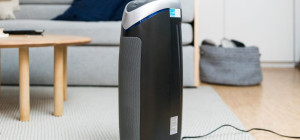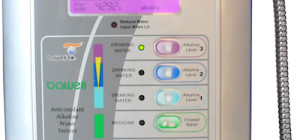
We all know that clean water is one of the most important requirements for our good health. In fact, water from the tap does not contain dangerous bacteria. The trouble lies somewhere else - contamination comes from the old, rusty pipes and chemical disinfectants. The bottled mineral water is an alternative, but it’s not very appropriate for daily use in the common case, because it contains higher amounts of sodium, fluorine and other elements. This is why filtering the life giving liquid at home is one of the most adequate ways to provide clean and healthy water.
Choosing The Right Water Filter
The next challenge upon us is, however, the choice of a filtering system. Which one (ones) you will choose, depends after all on the mixtures you want to deal with. If the water comes from the city pipes, the main danger are chlorine compounds and the pieces of rust. Whereas in smaller town areas, where the main water source are usually subterranean waters, they could contain malicious micro-organisms and agriculture chemicals. In the first case you will need one kind of filtering, in the second - completely different, but one way or another the contemporary filtering systems contain several ones.
The simplest method of filtration is mechanical. The water passes through a fine web, which separates the hard particles and sand grains. Usually this way is not used separately, but in combination with others, because it does not provide a full water cleansing. It is a necessary first step, anyway.
In order to obtain better results, you will need a filter, that absorbs the dissolved chemical compounds, like the one which has a charcoal in-built. The only disadvantage is, that, over time, it loses gradually its cleaning abilities and has to periodically be replaced. No matter whether you use it often or seldom, you will need to replace it every month.
If you use water from a well or other own source, you will need a method that destroys the harmful micro-organisms. Ultraviolet filters are ecologically friendly, relatively cheap, because they do not require often replacements, ruthless to all kinds of bacteria and mould, which thrive in drinkable water and, most importantly - unlike the traditional de-contamination with chlorine, they do not leave behind toxic substances in the water.
Finally, the most complex, but at the same time, most natural way to filter is reverse osmosis. With this method, the water goes through special membranes, which separate the dissolved particles in the water, that is to say, the mineral salts. The result is a maximum clean water and its quality is close to distilled one.
How To Use The Filters In Practice?
These are the basic filters to clean the water in theory, but how can you use them in practice at your own home? The simplest and most popular device is a jug, containing two reservoirs - for unfiltered and filtered water, while between then is the filtering device, where all contamination and salts lie.
Kitchen filters are more productive. They can be placed straight onto the water tap. This way, except for direct consumption, you can quick and easy filter water for cooking or other needs. Apart from that, the constant usage of the filter does not give an opportunity for different micro-organisms to thrive inside, as it often happens with cleansing jugs, if they remain unused for a couple of days.
Ultimately, it is your decision which one of the two methods of cleansing water you will choose as a more comfortable for your household. One thing is for sure-it is recommended to consume the filtered water in thirty to sixty minutes, because after this time it begins to contaminate again.
Shared by glipho.com.







